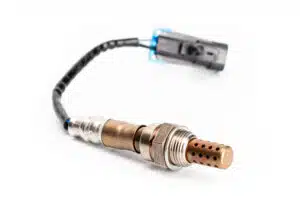Los Angeles Cash For Cars
We Take The Hassle Out of Selling Your Car
- Drew Marks
Oxygen Sensors and Your Cars Check Engine Light

Oxygen sensors, also called O2 sensors, are small but powerful components inside your car’s exhaust system. Their job is to monitor the level of oxygen in the exhaust gases and send that information to your car’s computer, known as the engine control unit (ECU). This allows the ECU to adjust the air-fuel ratio so your engine runs efficiently and your emissions stay low.
Most vehicles have two to four oxygen sensors. The upstream O2 sensors are located before the catalytic converter and monitor the air-fuel mixture coming out of the engine. On some car the upstream oxygen sensor is called the Air Fuel ratio Snsor. The downstream O2 sensors are located after the catalytic converter and check how effectively it reduces harmful emissions.
How Oxygen Sensors Trigger the Check Engine Light
- P0420 – Catalyst System Efficiency Below Threshold (Bank 1)
- P0430 – Catalyst System Efficiency Below Threshold (Bank 2)
How Oxygen Sensors Cause P0420 & P0430 Codes
- False readings: A worn-out downstream O2 sensor can make it look like the catalytic converter is failing, even when it’s fine.
- Delayed response: If an upstream sensor is slow or inaccurate, it may cause the engine to run with the wrong fuel mixture, which stresses the catalytic converter and triggers codes.
- Fuel mixture problems: A faulty upstream sensor may cause unburned fuel to enter the exhaust. Over time, this damages the catalytic converter and eventually causes both P0420 and P0430 codes.
Symptoms of Bad Oxygen Sensors and Catalyst Codes
- Check engine light stays on
- Reduced fuel efficiency
- Poor acceleration or stalling
- Rotten egg smell from exhaust
- Failed emissions test
Final Thoughts
Oxygen sensors are small parts that play a huge role in engine performance and emissions. When they fail, they can trigger codes like P0130, P0135, P0141, P0150, P0155, P0161, P0420, and P0430, all of which turn on the check engine light. Fixing the issue early can save you from expensive catalytic converter replacements.
If repairs cost more than you want to spend, you can still sell your car with a check engine light on. At Los Angeles Cash for Cars, we buy cars with oxygen sensor problems, catalytic converter issues, and check engine light codes. Serving Venice, Santa Monica, Marina del Rey, Culver City, and Manhattan Beach, we pay top dollar and offer same-day pickup.
Call (310) 893-0162 today for a fast, no-obligation cash offer.

Drew Marks
Has been buying, selling, reconditioning and restoring cars since 2008. He is the owner of Los Angeles Cash for Cars, a trusted car buyer serving the greater Los Angeles area. With years of hands-on experience in used cars, classic car restoration, and automotive valuation, he’s passionate about educating the public on how to sell a car for cash or buy a reliable used vehicle with confidence.
